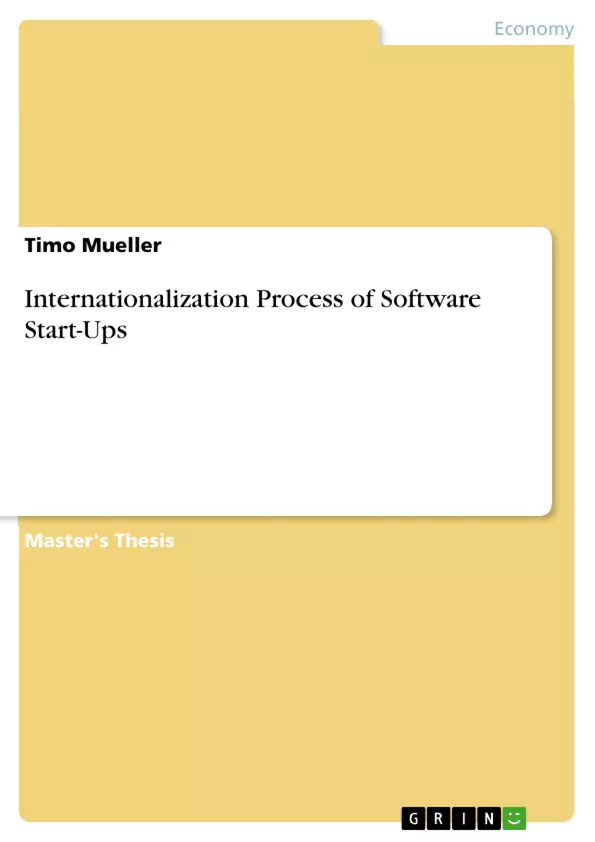This thesis examines how a software start-up can effectively shape its internationalization process to secure its market position and to achieve a sustainable competitive advantage. To formulate possible recommendations, a literature study and a descriptive case study are carried out. The literature review considers the research domains of born globals, or rather, international new ventures, which describe the emergence of young, small and fast internationalized organizations. Furthermore, the literature study also reflects relevant theoretical explanations and frameworks such as: resource-based theory, knowledge-based view, dynamic capabilities, organizational learning, innovation theory, and international entrepreneurship. On this theoretical basis, study propositions are derived, which are then tested against the case study. The study consists of two cases and describes the internationalization process of two software start-ups. The results of the case study are then compared with the study propositions. Deviations are discussed in detail later. Finally, 24 recommendations are made which can support the effective internationalization process of a software start-up.
Inhaltsverzeichnis (Table of Contents)
- Abstract
- Table of Contents
- Abbreviations
- List of Figures
- List of Tables
- Introduction
- Motivation
- State of Research
- Research Question
- Structure of the Work
- Literature Review
- Born Globals / International New Ventures
- Resource-Based Theory
- Knowledge-Based View
- Dynamic Capabilities
- Organizational Learning
- Innovation Theory
- International Entrepreneurship
- Methodology
- Research Method
- Scope Delimitation
- Data Collection and Data Analysis
- Results
- Company X
- Company Y
- Discussion
- Pattern Matching
- Detailed Analysis
- Recommendations
Zielsetzung und Themenschwerpunkte (Objectives and Key Themes)
This thesis aims to investigate the effective internationalization process of software start-ups to secure their market position and achieve sustainable competitive advantage. The research utilizes a literature review and descriptive case study to provide insights and recommendations. The study focuses on the theoretical frameworks of born globals, international new ventures, resource-based theory, knowledge-based view, dynamic capabilities, organizational learning, innovation theory, and international entrepreneurship. The research examines these frameworks through the lens of two software start-up case studies.
- Internationalization process of software start-ups
- Born globals and international new ventures
- Theoretical frameworks for internationalization
- Case study analysis of software start-ups
- Recommendations for effective internationalization
Zusammenfassung der Kapitel (Chapter Summaries)
The first chapter introduces the motivation, state of research, research question, and structure of the work. The second chapter provides a comprehensive literature review covering theories related to internationalization, such as born globals, resource-based theory, knowledge-based view, dynamic capabilities, organizational learning, innovation theory, and international entrepreneurship. Chapter three outlines the research methodology, including the research method, scope delimitation, and data collection and analysis. Chapter four presents the results of the case studies, examining the internationalization process of two software start-ups. Finally, chapter five discusses the findings, provides a detailed analysis, and offers recommendations for effectively managing the internationalization process of software start-ups.
Schlüsselwörter (Keywords)
The key terms and focus topics of this thesis include: software start-up, born global, international new venture, internationalization process, international entrepreneurship, descriptive case study, resource-based theory, knowledge-based view, dynamic capabilities, organizational learning, innovation theory.
- Citar trabajo
- Timo Mueller (Autor), 2017, Internationalization Process of Software Start-Ups, Múnich, GRIN Verlag, https://www.grin.com/document/374423



